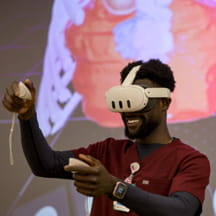A survey by Driscoll Children's Hospital in Corpus Christi, Texas, revealed unexpected answers about the transfer process to the hospital. Feedback showed the hospital was hard to get into because of how it was receiving and processing transfer requests.
At the 2020 Annual Leadership Conference, leaders from Driscoll Children's explained how they integrated call center and communication technology to accelerate patient transfer, transport and admission process.
"We realized we could no longer waste time on our manual, asynchronous intake process," says Patricia Carr, senior director, Nursing Services at Driscoll. "We didn't have a capacity issue. It was more about barriers. We had a very manual process, which led to not answering the phone in a timely manner or placing people on hold."
The hospital's protocol included a lot of phone calls, faxes and a tube system to move paperwork. Realizing the problems, staff set out to create a centralized approach by integrating call center technology with a voice-controlled communication solution. They started planning the Driscoll Access Center (DAS).
"Our goal was to streamline internal and external communications making it faster and easier to transfer patients," says Ann Blankenship, nurse manager, DAS. "We wanted to connect clinicians in a timely manner and ensure relevant information was available at the point of contact."
More technology
The planning team was adamant that they wanted more technology. While the hospital had several communication systems in place, their challenge was to integrate those systems. They also wanted to have the right people on the phone from the beginning of the process. The team redesigned the call center organization to put a clinical person on the phone to receive the intake call.
"We wanted RNs to answer the phone and the goal was to do that within three rings," says Blankenship. We spent a lot of time developing and designing what information we absolutely have to have and what is nice to know."
Streamlining included integrating the emergency medical record program so it was available at multiple points reaching the DAS communications specialists, the house manager, admitting, emergency department (ED) charge nurse and ED unit.
Listen to staff concerns
The reorganization meant role changes for several staff members, and the team handled those changes with sensitivity.
"One of the most important things we did was take the time to meet with staff as individuals and hear their concerns, react to their concerns and make sure we provided enough information. We then went back to ensure it worked," says Karen Long, vice president, Clinical Operations. "I'm incredibly proud of that—our greatest asset in our organization is the people who work in it."
Industry best practices
The DAC went live in January 2020. Since then, the organization has achieved 100% of calls answered by a nurse, improved outcomes for clinically complex patients due to transfer and increased patient satisfaction rates for the ED.
They have also achieved the six industry best practices.
- One call does it all. Improved efficiency of processes.
- Protocols and expectations. Established protocols for expedited acceptance of transfers.
- Productive physical space. Designed space so it was productive and contributes to positive perception of center—increased morale.
- State of the art technology. If possible, it's handled electronically. Calls are cut down lowering the stress level because the phone isn't ringing constantly.
- Measures of success. Stakeholders are giving great feedback. Quick access protocols are working.
For more details, watch the presentation recording.


